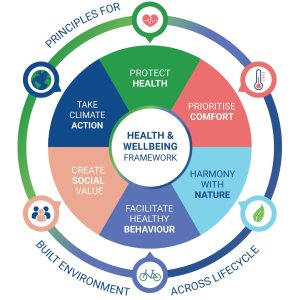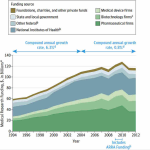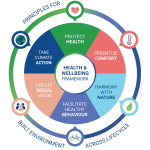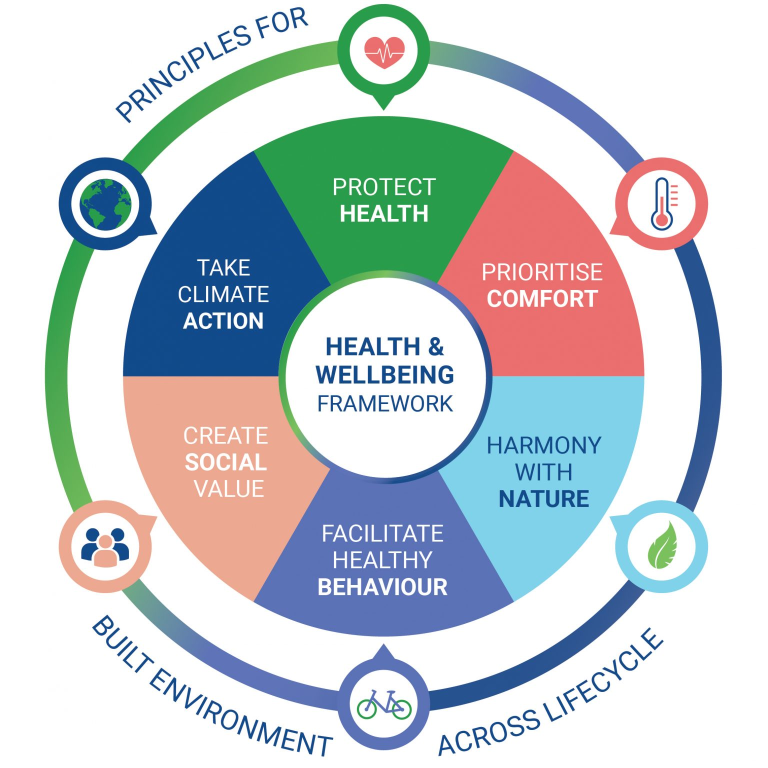Maternal mortality rates are a critical health indicator reflecting the safety of childbirth and the effectiveness of a country’s healthcare system. Alarmingly, the United States has the highest maternal mortality rate among high-income nations, with an increase in pregnancy-related deaths reported between 2018 and 2022. Research has shown that over 80 percent of these deaths are preventable, pointing to significant maternal health disparities that exist across different states and ethnic groups. Essential factors contributing to this crisis include inadequate postpartum care and rising chronic conditions such as cardiovascular disease during pregnancy. Addressing these issues is not just a public health priority; it is a moral imperative that requires urgent intervention to ensure safer childbirth experiences for all mothers.
The alarming prevalence of pregnancy-related fatalities, often termed maternal death rates, has emerged as a pressing concern in maternal healthcare discussions. Recent studies highlight the stark realities of prenatal and postpartum care inadequacies, further exacerbated by systemic inequalities within the U.S. healthcare framework. Disparities in maternal health outcomes are particularly pronounced among various racial and ethnic populations, emphasizing the need for tailored approaches to care. Additionally, rising prevalence of cardiovascular conditions among expectant mothers reveals an urgent need for better monitoring and support during and after pregnancy. The continued rise in maternal mortality underscores the necessity for a comprehensive re-evaluation of strategies aimed at improving the health and wellbeing of mothers across the nation.
The Rising Maternal Mortality Rates in the U.S.
Maternal mortality rates in the U.S. have seen a troubling upward trend, particularly emphasized by a recent study highlighting that between 2018 and 2022, maternal mortality reached alarming levels. The nation trails behind its high-income counterparts, showcasing systemic issues within the healthcare system that contribute to over 80 percent of these deaths being preventable. Issues such as inadequate prenatal care, lack of access to maternity care in certain regions, and significant racial disparities exacerbate the situation, indicating a pressing need for reform in healthcare policies.
That said, the statistics are staggering, with American Indian and Alaska Native women experiencing a maternal mortality rate of 106.3 deaths per 100,000 live births, which starkly contrasts with white women at 27.6 deaths. These excessive disparities underscore the inherent injustices present within the U.S. healthcare system. Addressing these challenges is crucial, as prolonged maternal mortality rates can lead to increased health complications for future generations.
Understanding Pregnancy-Related Deaths and Their Causes
Pregnancy-related deaths, which align with rising maternal mortality rates, include fatalities resulting from complications during or after pregnancy. Cardiovascular disease has become the leading cause of such deaths, surpassing earlier causes like hemorrhage. This shift reflects a growing trend where chronic health conditions, including hypertension and other cardiovascular issues, affect younger individuals, thus increasing their risk during and following pregnancy.
The need for a comprehensive approach to maternal health is becoming clear as the transition from acute to chronic health-related issues continues to impact demographic groups. Awareness and education are critical in addressing these complex challenges, highlighting the necessity for enhanced postpartum care that extends well beyond traditional timelines to include the ongoing health of mothers.
Addressing Maternal Health Disparities
Maternal health disparities remain a prominent issue within the U.S. healthcare system, affecting various demographics disproportionately. The observed trends indicate that race and ethnicity play significant roles in maternal health outcomes, with non-Hispanic Black women and American Indian women experiencing some of the highest mortality rates. The amalgamation of socio-economic factors, healthcare access, and systemic bias complicates these disparities, necessitating targeted interventions to bridge the gap.
Efforts to address these disparities should focus on innovative policy measures that provide equitable access to comprehensive prenatal and postpartum care. By examining successful models from states with lower maternal mortality rates, such as California, and understanding the unique challenges faced in different regions, policymakers can implement strategies that not only mitigate these health disparities but also enhance maternal health outcomes on a broader scale.
The Role of Postpartum Care in Maternal Health
Postpartum care is a critical component of maternal health that requires reevaluation in light of rising pregnancy-related deaths. This period, which has traditionally received limited attention, plays a vital role in ensuring the long-term health of new mothers. As research highlights, nearly a third of all maternal deaths occur beyond the immediate postpartum period, indicating that the healthcare system must shift its focus to support mothers well beyond the initial weeks after delivery.
By fostering a continuous care model that recognizes the full year postpartum, healthcare systems can better address the health needs of mothers. Investment in innovative postpartum programs that screen for chronic conditions and provide ongoing support can effectively reduce the incidence of late maternal deaths, improving overall maternal health and well-being.
Impact of Cardiovascular Disease in Pregnancy
Cardiovascular disease represents the leading cause of pregnancy-related deaths in the U.S., highlighting a pressing concern for maternal health. The increase in rates has shifted over decades, with a noticeable impact on younger women who are now exhibiting higher instances of conditions such as hypertension. This evolving landscape underscores the need for proactive measures to address these chronic conditions before pregnancy.
Understanding the complexities of cardiovascular risks in pregnancy requires an integrated healthcare approach. Clinicians must prioritize early detection and management of cardiovascular disease, ensuring that potential complications are recognized and treated appropriately. By emphasizing cardiovascular health as a crucial aspect of prenatal care, healthcare providers can significantly reduce the threat these conditions pose to maternal mortality.
The Importance of Comprehensive Health Tracking
A significant barrier in understanding and addressing maternal mortality rates is the lack of consistent data tracking in the U.S. Until 2018, there was no national standard for recording pregnancy-related deaths, which hindered the ability to analyze trends accurately or develop targeted interventions. The recent implementation of a pregnancy checkbox on death certificates has improved data collection, but more efforts are needed to ensure that all states uphold these measures effectively.
As states continue to enhance their data collection and reporting practices, it becomes increasingly possible to identify patterns and tailor solutions to specific regional disparities. This detailed data will be critical in informing public health initiatives and advancing maternal health policies that address the root causes of mortality and morbidity in pregnancy.
Advocacy for Enhanced Maternal Health Policies
Advocacy for improved maternal health outcomes must prioritize legislative changes that allocate resources effectively towards maternal care. Existing disparities highlight the urgency of implementing healthcare policies that ensure equitable access to quality prenatal and postpartum services. Advocates can play a vital role in driving awareness of maternal health issues and pushing for reforms that address systemic inequities, ultimately leading to lower maternal mortality rates.
Moreover, engaging communities in dialogue about maternal health can empower individuals to seek necessary care and support. Advocacy campaigns can also bridge gaps between healthcare providers and communities, fostering trust and encouraging shared responsibility in maternal health. As awareness grows, so too can the momentum for systemic change, making maternal health a priority in public health discussions.
Cultural Competency in Maternal Health
Cultural competency in maternal health is essential for addressing disparities in care and outcomes. Healthcare providers must receive training that allows them to understand the diverse cultural contexts within which their patients live. Cultural barriers can significantly impact a woman’s willingness to seek care, adhere to medical advice, and communicate effectively with providers.
By fostering an inclusive healthcare environment that respects and addresses varying cultural needs, practitioners can improve patient trust and health outcomes. This approach can ensure that appropriate care is provided to all women, ultimately reducing maternal mortality and enhancing the overall effectiveness of the U.S. healthcare system.
Investing in Maternal Health Research
Investing in maternal health research is fundamental to understanding the multifaceted issues surrounding pregnancy-related deaths. Continual funding and support for research initiatives can provide insights into the causes of maternal mortality, the effectiveness of existing healthcare policies, and potential innovative solutions. Such investments can contribute significantly to efforts aimed at reducing health disparities and improving maternal health outcomes for all women.
Research that focuses on both quantitative and qualitative aspects of maternal health can yield valuable data that informs relevant stakeholders, including policymakers and healthcare providers. This comprehensive understanding can lead to evidence-based practices that address the underlying issues contributing to rising maternal mortality rates, ultimately paving the way for a healthier future for mothers across the nation.
Frequently Asked Questions
What are the current maternal mortality rates in the U.S. and their implications?
As of 2022, the maternal mortality rate in the U.S. was reported at 32.6 deaths per 100,000 live births, an increase from 25.3 deaths per 100,000 live births in 2018. This alarming rise highlights significant systemic issues within the U.S. healthcare system and indicates a critical need for improved prenatal and extended postpartum care.
What factors contribute to the high maternal mortality rates in the U.S. compared to other high-income countries?
The U.S. maternal mortality rates are among the highest in high-income countries due to a combination of factors, including a fragmented healthcare system, insufficient access to quality maternal health care, and persistent disparities in healthcare based on race and ethnicity.
How do maternal health disparities affect pregnancy-related deaths in different racial groups?
Maternal health disparities significantly impact pregnancy-related deaths, with American Indian and Alaska Native women experiencing the highest mortality rates (106.3 deaths per 100,000 live births), followed by non-Hispanic Black women (76.9 deaths per 100,000 live births) and white women (27.6 deaths per 100,000 live births). Factors contributing to these disparities include inequitable healthcare access and systemic bias.
Why is postpartum care important in addressing maternal mortality rates?
Postpartum care is crucial because nearly one-third of pregnancy-related deaths occur between 42 days and one year after childbirth. This highlights the need for continuous healthcare support during the postpartum period, rather than focusing solely on the weeks immediately following delivery.
What role does cardiovascular disease play in maternal mortality rates during pregnancy?
Cardiovascular disease has emerged as the leading cause of pregnancy-related deaths, accounting for over 20% of such fatalities. Increasing rates of chronic conditions, such as hypertension in younger pregnant individuals, contribute significantly to rising maternal mortality rates.
How can investments in public health infrastructure improve maternal mortality rates?
Investing in public health infrastructure can lead to better tracking of maternal mortality rates, enhanced quality of care, and more effective policies to address the root causes of maternal health disparities. Such improvements are essential in reducing preventable deaths related to pregnancy.
Why is it important to expand the definition of maternal mortality to include late maternal deaths?
Expanding the definition of maternal mortality to include late maternal deaths (those occurring from 42 days to one year postpartum) acknowledges the continuum of postpartum recovery. This perspective emphasizes the need for healthcare systems to provide ongoing support beyond the first weeks after delivery.
What are the implications of rising maternal mortality rates on future pregnancy and maternal health policies?
Rising maternal mortality rates signal the urgent need for policy reform in maternal health, including increased funding for innovative care solutions and addressing state-level disparities. Without such action, the cycle of preventable pregnancy-related deaths is likely to continue.
| Aspect | Details |
|---|---|
| Overall Maternal Mortality Rate (2018-2022) | Increased from 25.3 to 32.6 deaths per 100,000 live births. |
| Racial Disparities | American Indian and Alaska Native women: 106.3 deaths per 100,000 live births. Non-Hispanic Black women: 76.9 deaths per 100,000 live births. White women: 27.6 deaths per 100,000 live births. |
| Leading Cause of Death | Cardiovascular disease has overtaken hemorrhage as the leading cause of pregnancy-related death, accounting for over 20% of deaths. |
| Impact of COVID-19 | 2021 saw a sharp increase in mortality rates, with numbers remaining high in 2022 compared to 2018, indicating ongoing issues. |
| Late Maternal Deaths | Nearly one-third of maternal deaths occurred after 42 days postpartum, emphasizing the need for continuous care beyond initial postpartum visits. |
| Need for Organizational Change | Investment in public health infrastructure and improved care quality during pregnancy and postpartum is essential to address rising maternal mortality rates. |
Summary
Maternal mortality rates in the U.S. continue to rise, maintaining the country’s position as the leader in maternal mortality among high-income nations. With over 80% of these deaths deemed preventable, it is critical to address the alarming disparities linked to race and state demographics. The recent data indicates urgent needs for systemic change in healthcare policy, enhanced access to quality pre- and postpartum care, as well as investments in public health infrastructure. If meaningful improvements are not initiated promptly, the rates of maternal mortality could worsen, jeopardizing the lives of mothers across the nation.
















